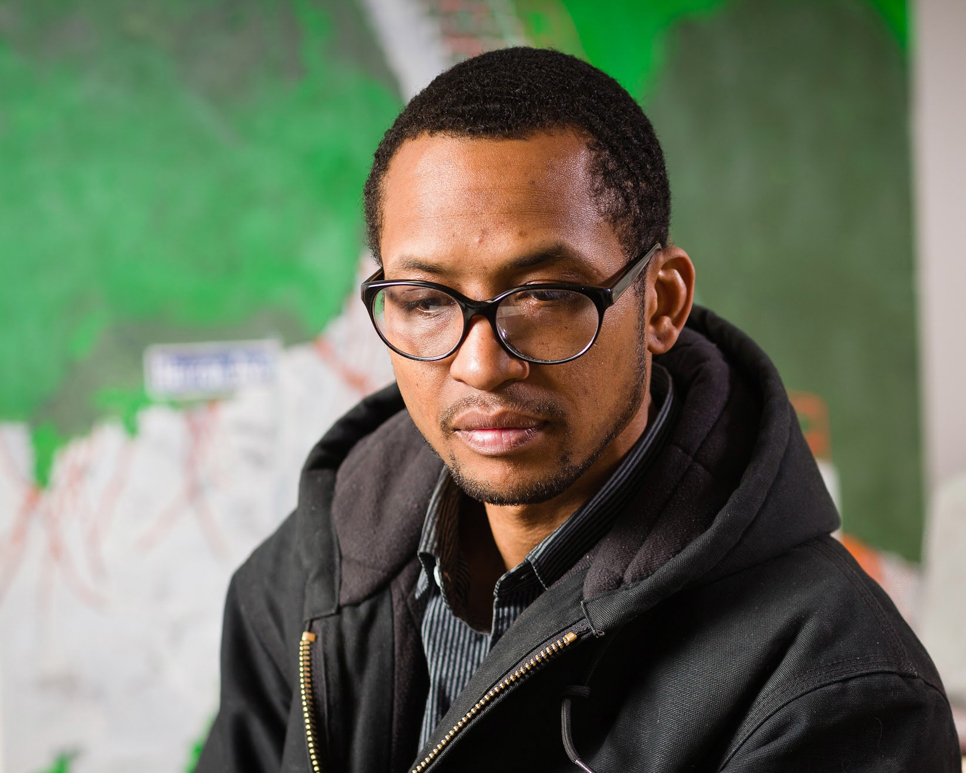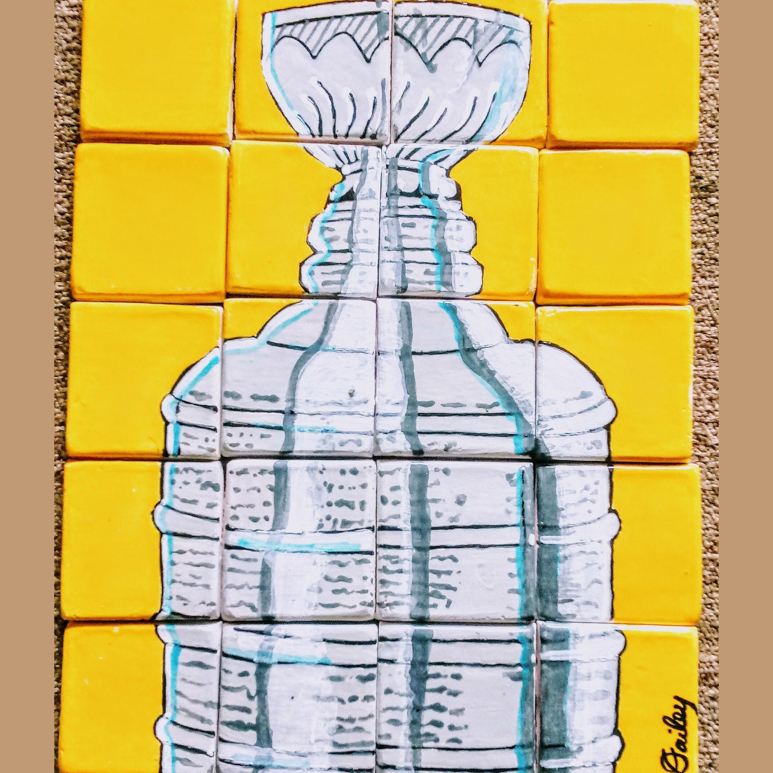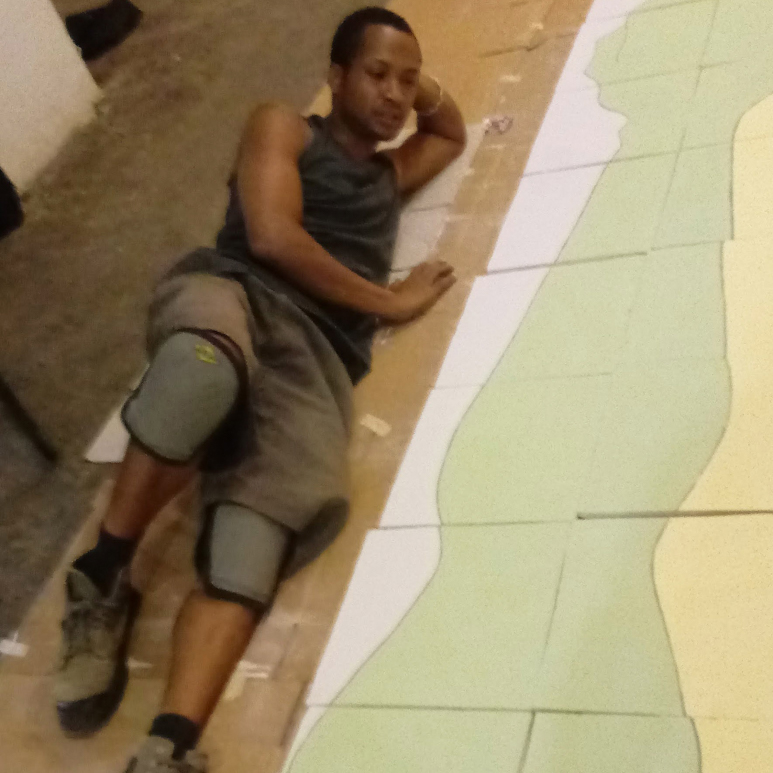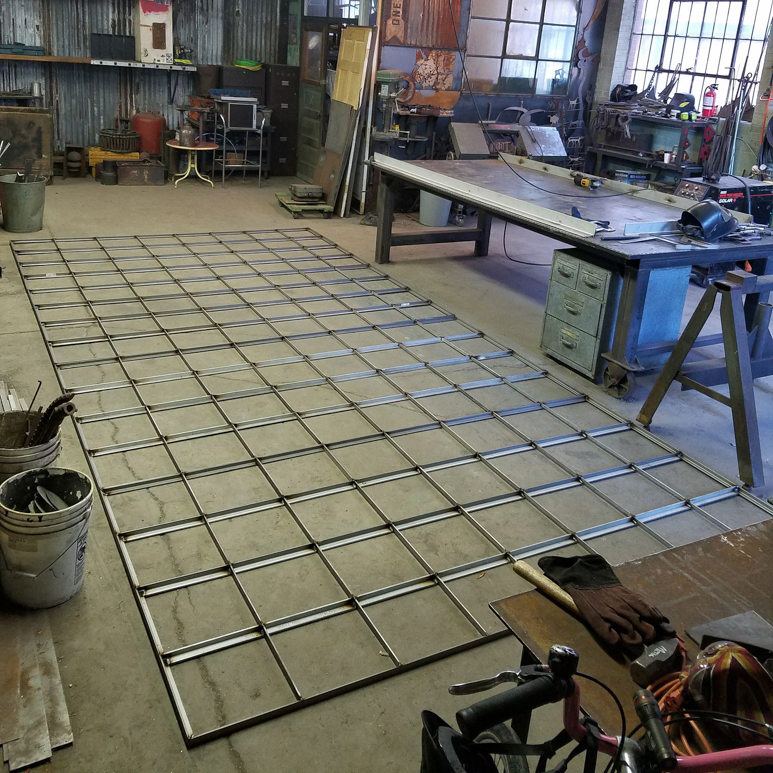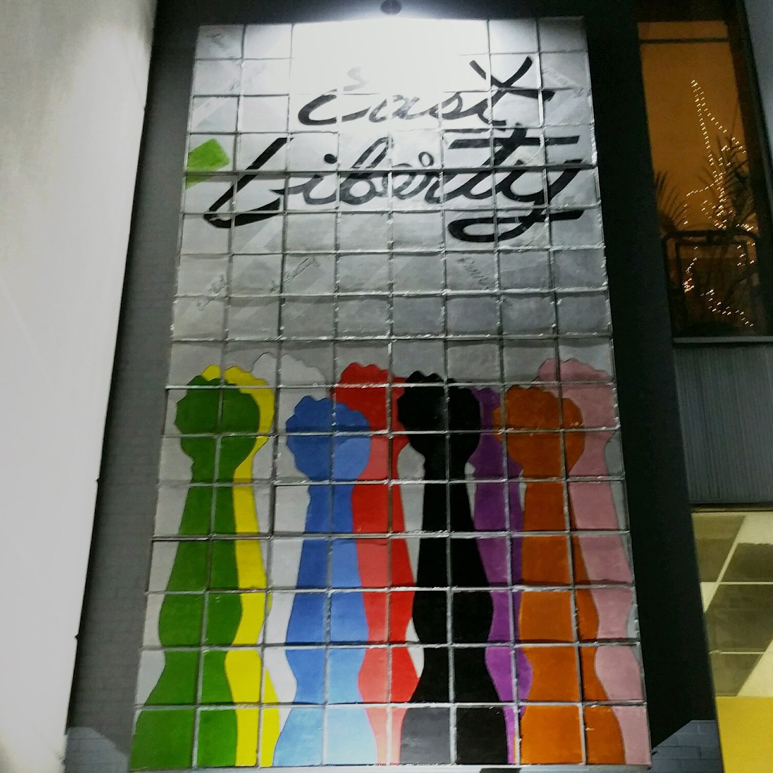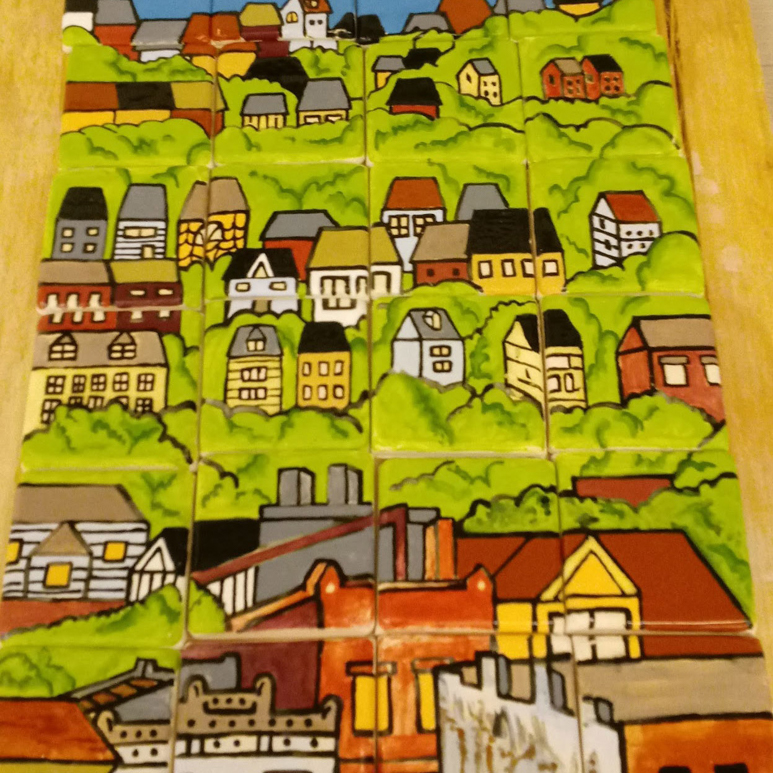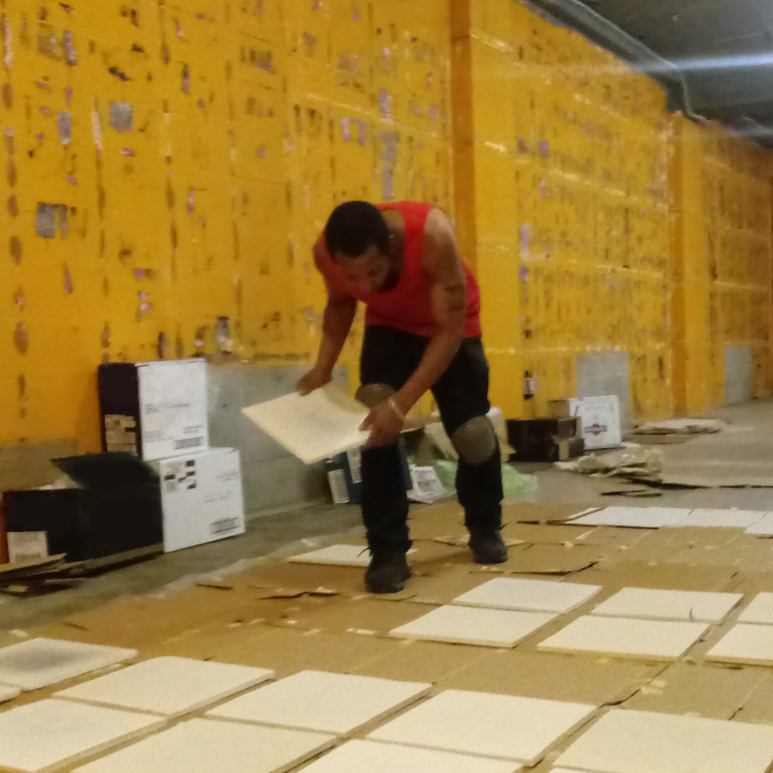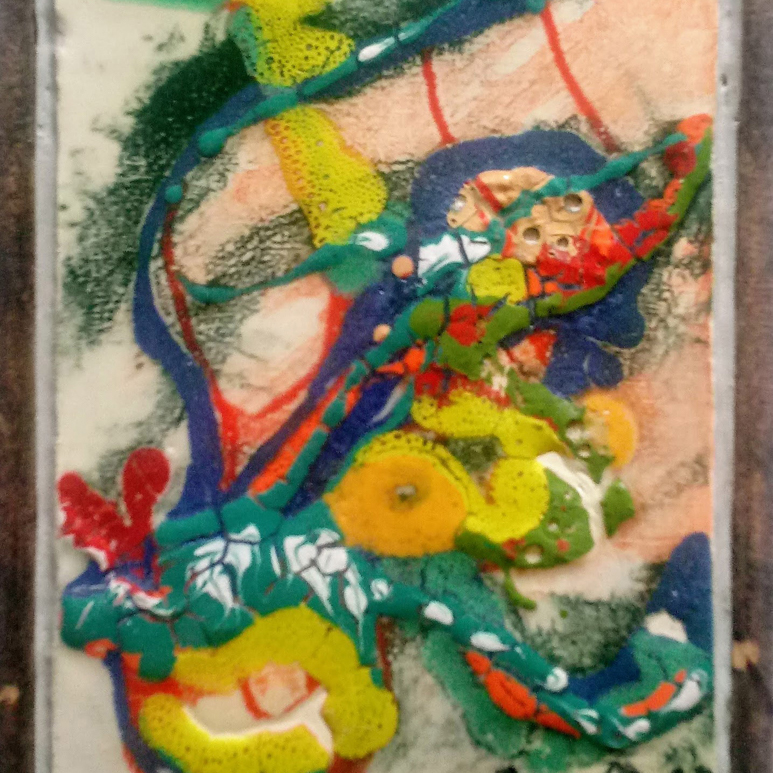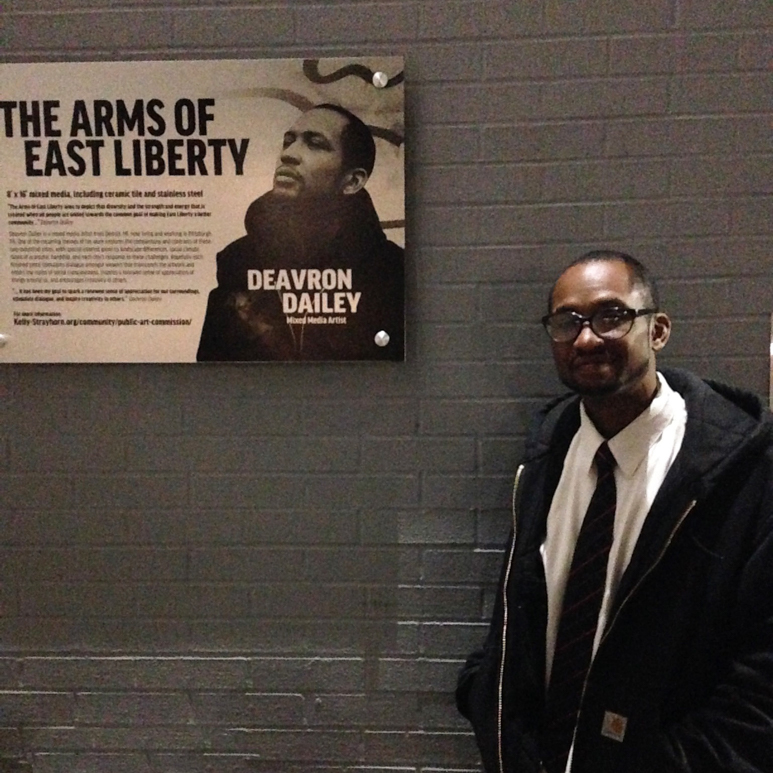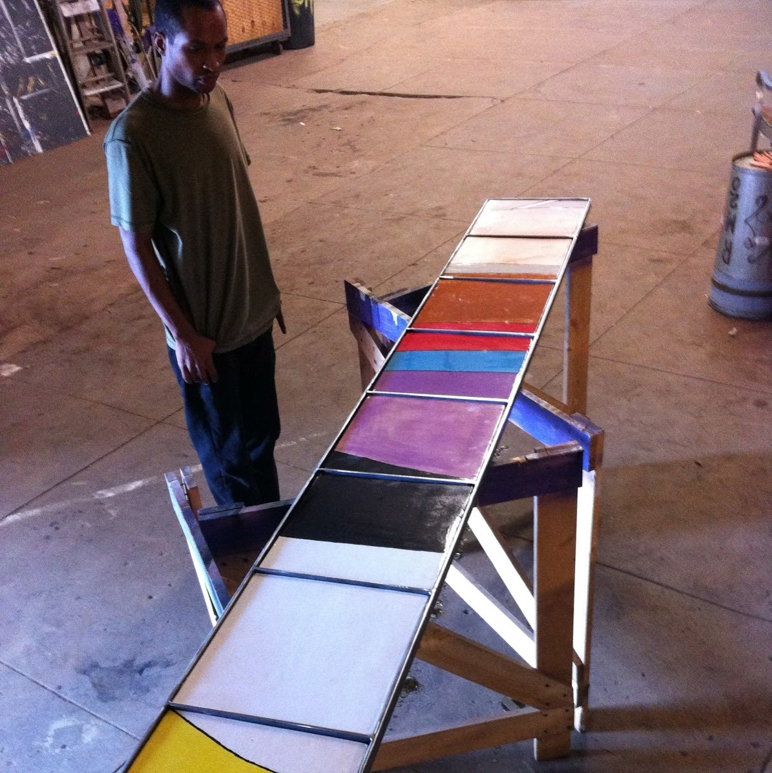Mayco: Can you tell us a little about yourself?
Deavron: I am a mixed media artist from Detroit, MI, now living and working in Pittsburgh, PA. One of the recurring themes of my work explores the comparisons and contrasts of these two industrial cities, with special interest given to landscape differences, social climate, times of economic hardship, and each city’s response to these challenges. A variety of artistic media is used to create my work such as screen printing, painting, ceramics, sculpture, drawing, writing, and more. Often times a number of these forms of artistic media find their way into one project. I am inspired by specific locations, buildings, and landscape details, and finds great pleasure in determining which form of artistic media accurately depicts the feeling of interest, mood, or inspiration that has been evoked. Hopefully, each finished piece stimulates dialogue amongst viewers that transcends the artwork and enters the realm of social consciousness, inspires a renewed sense of appreciation of things around us, and encourages creativity in others.
Mayco: What drew you towards working with ceramics?
Deavron: When first relocating to Pittsburgh I found the Braddock Carnegie Library by looking for a place to create a number of ideas that were coming to me at a time when I had very little knowledge of where arts facilities were in Pittsburgh. The town of Braddock has suffered from economic hardships since the decline of Pittsburgh’s steel industry and the Braddock Carnegie Library is a hub for the community that strives to provide arts programming and many other resources to the community. These programs are headed by a collective called Transformasium, whom I began working closely with for my first two years and a half years of coming to Pittsburgh. The library has a print shop and a ceramic studio. I began working and creating art in the library’s print shop and also teaching screen printing. I naturally gravitated down to the ceramic studio and began to learn about clay so that I could overlap the printmaking medium and ceramics, and other ideas that would be considered mixed media. I have now been working with ceramics for seven years and ceramics has been a part of my work and exhibitions ever since.
Mayco: Please tell us about your recent installation, “The Arms of East Liberty”? What was the biggest influence in your design?
Deavron: “The Arms of East Liberty” was inspired by my observations of the community of East Liberty, which is located in Pittsburgh, PA, as well as my own experience of relocating to Pittsburgh from Detroit. The community of East Liberty has struggled with the issue of gentrification for a number of years. The artwork depicts nine brightly colored raised fists over a map of East Liberty. The raised fists represent the diversity of the area and the strength and unity that is created when all people of the community, including investors and developers, are committed to the goal of making East Liberty a better community. The composition of the artwork also took on a second symbolic meaning, representing the way I accessed a number of facilities to complete the installation.
Mayco: Can you briefly describe your production process?
Deavron: For “The Arms of East Liberty” piece I used 1,600 lbs. of Standard Ceramic’s 420 sculpture clay with grog. The texture of that clay has the lowest absorption rate making the tiles suitable for this outdoor application. I handmade 128 sq. ft. tiles using a slab roller and a wooden template. I then hand glazed each tile to form the image. Next, an 8 ft. x 16 ft. stainless steel “grid” was constructed. I then ordered a specially formulated adhesive that bonds ceramic to steel and is able to withstand extreme outdoor conditions. The stainless steel frame was then attached to the building and using the adhesive and a scissor lift I adhered the tiles to the frame. Lastly, I applied a silicone sealant around the perimeter of each tile for extra support.
Mayco: How do Mayco glazes fit into your work or work for you?
Deavron: Mayco glazes fit into my work similar to the way I use acrylic paints when creating a painting, or like screen printing ink when I am making prints or screen printing on fabric. Mayco glazes are a superior product that allows me the flexibility to push the ceramic medium further, in non-traditional ways. They are able to be mixed, which allows me to achieve the results I envision when I am inspired to make artwork in a way that is not possible with other glaze products.
Mayco: Is there a universal concept or theme that you would like to retain as the foundation for all your future work?
Deavron: One of the recurring themes of my current work explores the comparisons and contrasts of Detroit and Pittsburgh, such as topography and landscape, social climate, times of economic hardships, and how each city responds to these challenges. I find inspiration in specific sites and locations, among other things. In the future, the themes of my work may change, just as the world around us is always changing.
Mayco: Can you tell us a little about your studio space? How important is this environment in the conceptualization of your work?
Deavron: I currently work in a number of art studios in and around Pittsburgh. The wide range of materials used in my work requires the use of many types of facilities. One studio that I use more frequently for my ceramic work and printmaking is the Pittsburgh Center for the Arts. I look forward to the day when I have a facility of my own that will be able to accommodate the wide range of work I create.
Mayco: What have been the most influential and career changing experiences you have had? What about these experiences was so important?
Deavron: During my time of working at the Braddock Carnegie Library the art/programming collective Transformasium were invited to create an exhibition for the 2013 Carnegie International. Their idea was to form an art lending collection which would be exhibited in the museum, as well as live on inside of the Braddock Carnegie Library. I was one of the individuals they enlisted to help bring the idea to life. We were able to solicit artwork from local, regional, and international artists to form the collection. Each of the artists in the Carnegie International also donated artwork. It was an honor to be a part of such a prestigious exhibition after being in Pittsburgh only a short time. My current installation, “The Arms of East Liberty” is also a career-defining moment because after a number of exhibitions and working with a number of arts organizations I have become extremely interested in large-scale public art opportunities and was very pleased when I was contacted to create my latest work.
Mayco: Can you tell us about any future projects?
Deavron: I am currently seeking more public art opportunities while continuing to make artwork for exhibitions.
Mayco: When you’re not making or promoting your work, what do you do for fun?
Deavron: When I am not making or promoting my work I enjoy visiting art exhibitions, galleries and museums, and going to community events, etc.

